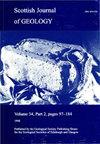末次冰期-间冰期过渡(16-8 cal ka BP)期间气候突变响应的环境变率:来自奥克尼大陆的证据
IF 0.5
4区 地球科学
Q4 GEOLOGY
引用次数: 8
摘要
最后一次冰川-冰间过渡(LGIT)是一个气候复杂的时期,千年尺度的气候重组导致了生态系统的变化。除了千年尺度的变化外,在格陵兰岛和欧洲大陆的记录中还观察到了百年尺度的气候事件。这些突发事件对景观和环境的影响目前很难辨别。这在一定程度上与许多研究获得的低时间分辨率以及古环境指标对突变的敏感性有关。我们对奥克尼Quoyloo Meadow进行了高分辨率的孢粉学和木炭研究,并使用主曲线统计方法来帮助揭示生物地层的变化。奥克尼的LGIT植被演替在温德米尔季际和全新世早期表现为开阔草原和Empetrum荒原,在洛蒙德湖体育场表现为开阔草地和蒿属。然而,以开阔地植物群扩张为特征的生态变化的另外三个阶段分别为14.05-13.63、10.94-110.8和10.2 cal ka BP。这些变化的时间受到已知年龄的隐孢子虫的限制。本文通过将Quoyloo Meadow和奥克尼的Crudale Meadow进行比较得出结论,认为温德米尔的两个星际记录都是不完整的,火灾是全新世早期重要的景观控制因素。补充材料:与本出版物相关的所有原始数据:原始花粉计数、木炭数据、主曲线和变化率输出以及年龄模型输出可在https://doi.org/10.6084/m9.figshare.c.4725269专题集:本文是“早期职业研究”的一部分,可访问:https://www.lyellcollection.org/cc/SJG-early-career-research本文章由计算机程序翻译,如有差异,请以英文原文为准。
Environmental variability in response to abrupt climatic change during the Last Glacial–Interglacial Transition (16–8 cal ka BP): evidence from Mainland, Orkney
The Last Glacial–Interglacial Transition (LGIT) is a period of climatic complexity where millennial-scale climatic reorganization led to changes in ecosystems. Alongside millennial-scale changes, centennial-scale climatic events have been observed within records from Greenland and continental Europe. The effects of these abrupt events on landscapes and environments are difficult to discern at present. This, in part, relates to low temporal resolutions attained by many studies and the sensitivity of palaeoenvironmental proxies to abrupt change. We present a high-resolution palynological and charcoal study of Quoyloo Meadow, Orkney and use the Principal Curve statistical method to assist in revealing biostratigraphic change. The LGIT vegetation succession on Orkney is presented as open grassland and Empetrum heath during the Windermere Interstadial and early Holocene, and open grassland with Artemisia during the Loch Lomond Stadial. However, a further three phases of ecological change, characterized by expansions of open ground flora, are dated to 14.05–13.63, 10.94–10.8 and 10.2 cal ka BP. The timing of these changes is constrained by cryptotephra of known age. The paper concludes by comparing Quoyloo Meadow with Crudale Meadow, Orkney, and suggests that both Windermere Interstadial records are incomplete and that fire is an important landscape control during the early Holocene. Supplementary material: All raw data associated with this publication: raw pollen counts, charcoal data, Principal Curve and Rate of Change outputs and the age-model output are available at https://doi.org/10.6084/m9.figshare.c.4725269 Thematic collection: This article is part of the ‘Early Career Research’ available at: https://www.lyellcollection.org/cc/SJG-early-career-research
求助全文
通过发布文献求助,成功后即可免费获取论文全文。
去求助
来源期刊

Scottish Journal of Geology
地学-地质学
CiteScore
1.70
自引率
0.00%
发文量
10
审稿时长
>12 weeks
期刊介绍:
Although published only since 1965, the Scottish Journal of Geology has a long pedigree. It is the joint publication of the Geological Society of Glasgow and the Edinburgh Geological Society, which prior to 1965 published separate Transactions: from 1860 in the case of Glasgow and 1863 for Edinburgh.
Traditionally, the Journal has acted as the focus for papers on all aspects of Scottish geology and its contiguous areas, including the surrounding seas. The publication policy has always been outward looking, with the Editors encouraging review papers and papers on broader aspects of the Earth sciences that cannot be discussed solely in terms of Scottish geology.
The diverse geology of Scotland continues to provide an important natural laboratory for the study of earth sciences; many seminal studies in geology have been carried out on Scottish rocks, and over the years the results of much of this work had been published in the Journal and its predecessors.
The Journal fully deserves its high reputation worldwide and intends to maintain its status in the front rank of publications in the Earth sciences.
 求助内容:
求助内容: 应助结果提醒方式:
应助结果提醒方式:


